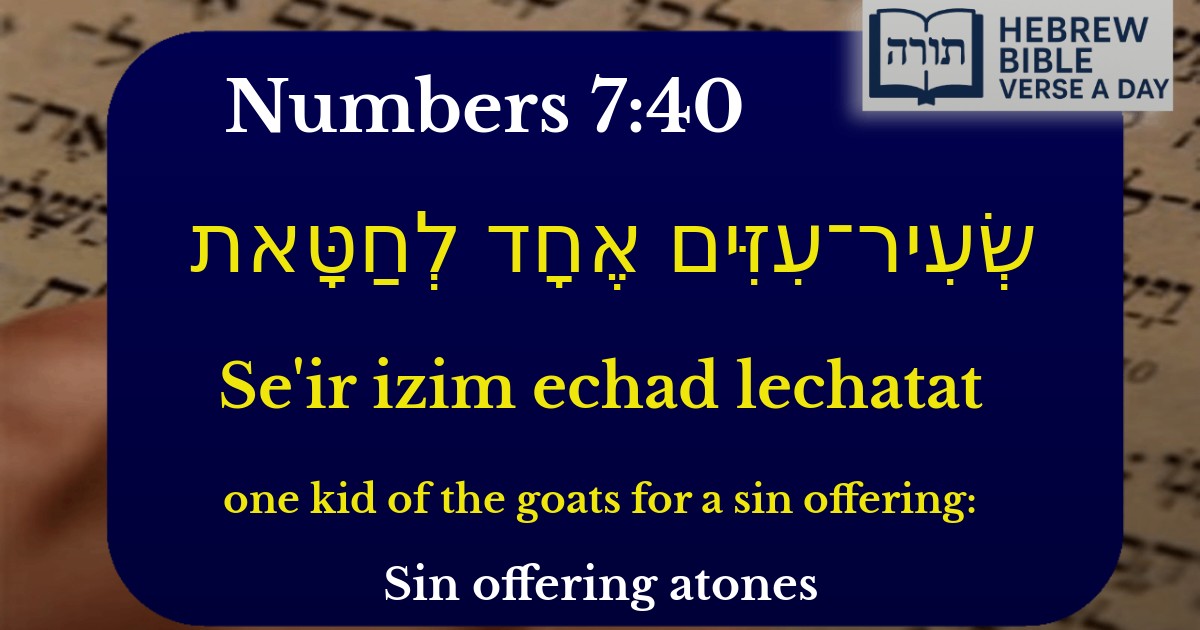Join Our Newsletter To Be Informed When New Videos Are Posted
Join the thousands of fellow Studends who rely on our videos to learn how to read the bible in Hebrew for free!
Hebrew Text
שְׂעִיר־עִזִּים אֶחָד לְחַטָּאת
English Translation
one kid of the goats for a sin offering:
Transliteration
Se'ir izim echad lechatat
Hebrew Leining Text
שְׂעִיר־עִזִּ֥ים אֶחָ֖ד לְחַטָּֽאת׃
Parasha Commentary
📚 Talmud Citations
This verse is quoted in the Talmud.
📖 Yoma 66b
The verse is referenced in the discussion about the sin offerings brought on Yom Kippur, specifically regarding the goat offered as a sin offering.
📖 Menachot 110a
The verse is mentioned in the context of discussing various types of sin offerings and their requirements.


Explanation of "שְׂעִיר־עִזִּים אֶחָד לְחַטָּאת"
The verse "שְׂעִיר־עִזִּים אֶחָד לְחַטָּאת" (one kid of the goats for a sin offering) refers to the sacrificial offering brought to atone for certain sins. This type of offering is known as a Chatat (sin offering) and is discussed extensively in Vayikra (Leviticus) and other Torah sources.
Rashi's Commentary
Rashi (Vayikra 4:23) explains that the שְׂעִיר־עִזִּים (goat kid) is specified here as a sin offering for unintentional transgressions committed by a leader (נשיא) or the community. The goat is chosen because it is a common animal and serves as a symbolic atonement for wrongdoing. Rashi further notes that the goat must be without blemish, as any physical defect would invalidate the offering.
Rambam's Perspective
In Hilchot Maaseh HaKorbanot (Laws of Sacrificial Offerings), the Rambam (Maimonides) elaborates on the procedures for bringing a Chatat. He emphasizes that the sin offering serves as a means of repentance and spiritual purification. The goat, as a representative offering, underscores the seriousness of sin and the need for sincere teshuvah (repentance).
Midrashic Insights
The Midrash (Vayikra Rabbah 5:5) connects the goat offering to the story of Yosef and his brothers, who used a goat's blood to deceive Yaakov about Yosef's fate. This teaches that the goat serves as a reminder of the consequences of sin and the importance of rectifying past wrongs.